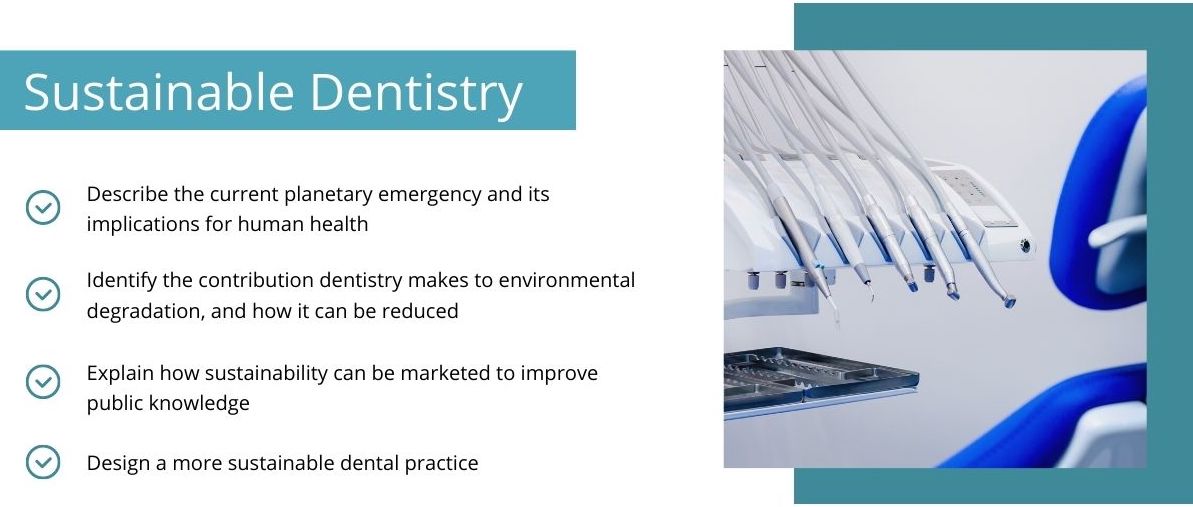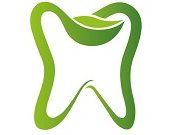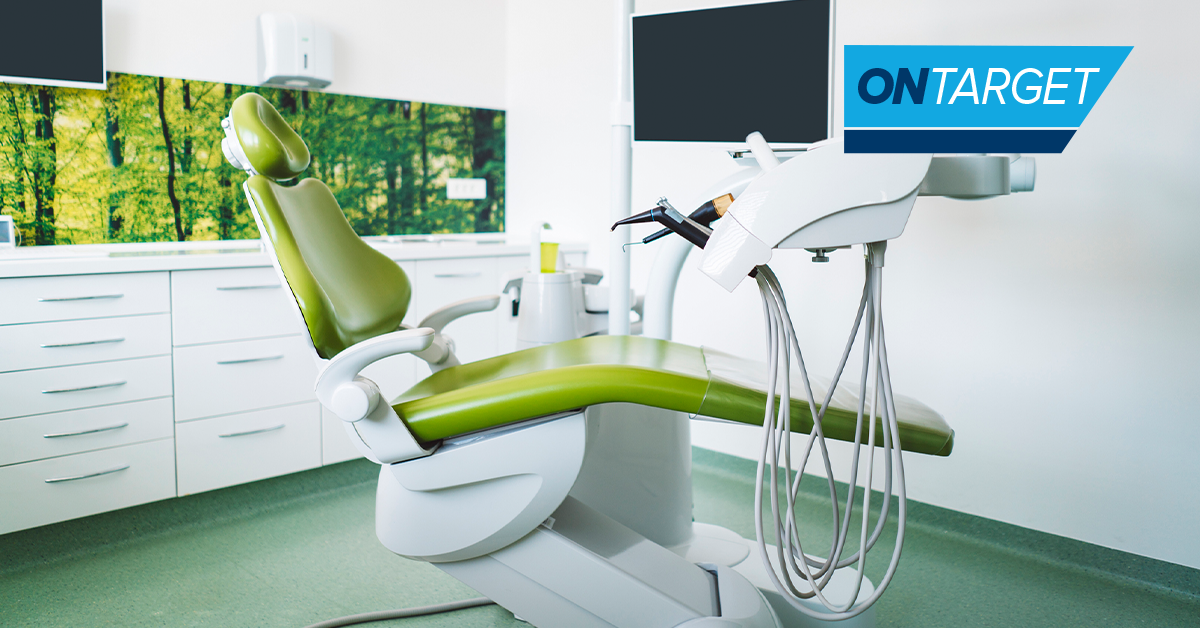Sustainable Dentistry: Reducing Your Carbon Footprint As A Dentist
Are you a dentist looking to make a positive impact on the environment? Sustainable dentistry is the way to go!
By implementing energy-efficient equipment and practices, using sustainable materials, conserving water, and adopting green energy sources, you can significantly reduce your carbon footprint as a dentist.
Not only will this benefit the planet, but it can also enhance your professional reputation and attract eco-conscious patients.
In this article, we will explore various strategies and practices that you can adopt to make your dental practice more sustainable and environmentally friendly.

So, let’s dive in and discover how you can play a vital role in reducing your carbon footprint as a dentist!
Energy-efficient Equipment and Practices
Did you know that using energy-efficient equipment and practices can greatly reduce your carbon footprint as a dentist? By investing in energy-efficient dental equipment, such as low-energy consumption dental chairs and LED lights, you can significantly decrease the amount of energy you use in your practice.
These energy-saving devices not only help the environment but also have the added benefit of reducing your practice’s utility bills. Additionally, implementing energy-saving practices, such as turning off equipment when not in use and optimizing the use of natural lighting, can further contribute to reducing your carbon footprint.
One of the key energy-efficient practices you can adopt is using digital imaging instead of traditional X-ray films. Digital X-rays not only eliminate the need for chemicals used in film processing but also require significantly less energy to produce. This not only reduces the environmental impact but also improves patient safety by eliminating the exposure to harmful chemicals.
Another energy-saving measure is investing in energy-efficient HVAC systems. These systems use less energy to heat, cool, and ventilate your practice, resulting in reduced carbon emissions and lower energy costs.
Furthermore, it is important to regularly maintain and service your dental equipment to ensure optimal energy efficiency. By keeping your equipment in good working condition, you can avoid energy wastage due to malfunctioning or inefficient devices. Additionally, consider implementing energy-saving habits such as using power-saving modes on your electronic devices and encouraging your staff to turn off lights and equipment when not in use. These small changes can have a significant impact in reducing your carbon footprint and promoting sustainability in your dental practice.
By incorporating energy-efficient equipment and practices into your dental practice, you can make a positive impact on the environment while also benefiting from reduced utility bills. Investing in energy-saving devices, utilizing digital imaging, optimizing natural lighting, and maintaining your equipment can all contribute to reducing your carbon footprint as a dentist. Embracing sustainable dentistry not only helps protect the planet but also sets a responsible example for your patients and the dental community as a whole.
Sustainable Materials and Waste Reduction
Start by using environmentally-friendly materials and reducing waste in order to make a positive impact on the planet as a dentist. One way to do this is by choosing sustainable dental materials for your practice. Look for products that are made from recycled or renewable materials, such as toothbrushes made from bamboo or biodegradable dental floss. By opting for these eco-friendly options, you can help reduce the amount of plastic waste that ends up in landfills and oceans.
Another way to promote sustainability in dentistry is by implementing waste reduction practices. Start by evaluating your current waste management system and identify areas where you can make improvements. For example, you can encourage patients to bring their own reusable water bottles instead of providing single-use plastic cups. Additionally, you can work with dental labs and suppliers to reduce packaging waste by opting for bulk orders or recyclable packaging materials.
Lastly, consider implementing a recycling program in your dental office. Set up designated recycling bins for materials such as paper, plastic, and glass. Educate your staff on the importance of recycling and provide clear guidelines on what can be recycled. By recycling materials instead of sending them to the landfill, you can help conserve valuable resources and reduce the environmental impact of your practice.
By using sustainable materials and reducing waste in your dental practice, you can make a significant contribution to reducing your carbon footprint. These small changes can add up to make a big difference in the long run. Not only will you be helping the planet, but you’ll also be setting a positive example for your patients and colleagues. Together, we can create a more sustainable future for dentistry.
Water Conservation
By implementing water conservation practices, you can create a dental office that is mindful of its water usage and helps to preserve this precious resource. One of the first steps you can take is to install low-flow faucets and toilets. These fixtures are designed to use less water without compromising their functionality. By using low-flow faucets, you can reduce the amount of water wasted during handwashing and instrument cleaning.
Similarly, low-flow toilets can significantly decrease the amount of water used for flushing, saving thousands of gallons of water each year.
Another way to conserve water in your dental office is by utilizing waterless or reduced-water dental procedures. For example, instead of using a traditional dental handpiece that requires a constant flow of water for cooling, you can switch to air-driven handpieces that don’t require water. This simple change can save a significant amount of water over time. Additionally, consider investing in waterless dental suction systems that use advanced technology to remove saliva and debris without the need for water irrigation.
Lastly, it’s essential to educate both your staff and patients about the importance of water conservation. Train your team on water-saving techniques and encourage them to be mindful of their water usage throughout the day. You can also provide educational materials in your waiting area or on your website to raise awareness among patients. By promoting the value of water conservation, you can inspire others to adopt sustainable practices and contribute to the preservation of this vital resource.
Incorporating water conservation practices into your dental office not only helps to reduce your carbon footprint but also demonstrates your commitment to environmental sustainability. By installing low-flow fixtures, utilizing waterless or reduced-water procedures, and educating your staff and patients, you can make a significant impact on water conservation. Every drop saved counts, and together, we can create a more sustainable future for dentistry.
Green Energy Sources
Switching to green energy sources can help you power your dental office in an environmentally friendly way and save money on your energy bills.
One option is to install solar panels on the roof of your office. Solar energy is a renewable and clean source of power that can generate electricity for all your dental equipment. By harnessing the power of the sun, you can reduce your reliance on fossil fuels and decrease your carbon emissions.
Another green energy source to consider is wind power. Installing a small wind turbine on your property can provide a consistent and reliable source of electricity. Wind energy is also renewable and doesn’t produce any air or water pollution. By investing in wind power, you can contribute to a cleaner and more sustainable energy grid while lowering your dental office’s carbon footprint.
In addition to solar and wind power, you can also explore the option of geothermal energy. This involves using the natural heat from the earth to generate electricity and heat your dental office. Geothermal energy is a highly efficient and renewable source that can drastically reduce your energy consumption. By tapping into the earth’s natural resources, you can both save money on your energy bills and minimize your impact on the environment.
Switching to green energy sources for your dental office isn’t just a responsible choice for the planet, but it can also benefit your bottom line. By reducing your energy consumption and relying on renewable sources, you can save money on your energy bills in the long run. Additionally, utilizing green energy can enhance your practice’s reputation and attract environmentally conscious patients who value sustainable dentistry.
So why not make the switch to green energy and take a step towards a greener and more sustainable dental practice?
Responsible Chemical Management
When it comes to responsible chemical management in dentistry, there are a few key points to keep in mind. First, make sure to use eco-friendly cleaning products and disinfectants, as they’re less harmful to the environment.
Second, it’s crucial to properly dispose of hazardous materials, such as mercury and lead, to prevent pollution.
Finally, consider exploring alternative materials and techniques for dental procedures that’re more sustainable and have less impact on the environment.
Use eco-friendly cleaning products and disinfectants
To minimize your carbon footprint as a dentist, consider incorporating eco-friendly cleaning products and disinfectants into your practice.
Traditional cleaning products and disinfectants often contain harsh chemicals that can be harmful to both the environment and the health of your patients. By switching to eco-friendly alternatives, you can reduce the amount of toxic waste released into the environment and promote a healthier workplace for everyone.
There are many eco-friendly options available on the market today. Look for cleaning products and disinfectants that are biodegradable, non-toxic, and made from renewable resources. These products are typically free from harmful chemicals such as chlorine, ammonia, and phosphates, which can contribute to air and water pollution.
Additionally, eco-friendly products often come in recyclable packaging, further reducing their environmental impact. By making this simple change in your practice, you can contribute to a more sustainable future while still maintaining a clean and safe environment for your patients.
Properly dispose of hazardous materials
Ensure that you properly dispose of hazardous materials, such as mercury-containing dental amalgam and expired medications, to minimize their negative impact on the environment and public health.
Mercury is a potent neurotoxin that can have detrimental effects on aquatic ecosystems and human health. When dental amalgam waste is not disposed of correctly, it can end up in water bodies, where it can accumulate in fish and other aquatic organisms. These organisms can then be consumed by humans, leading to mercury exposure and potential health risks. By following proper disposal protocols and using amalgam separators, you can prevent mercury from entering the environment and protect both the ecosystem and public health.
In addition to dental amalgam, it’s essential to dispose of expired medications appropriately. Medications that are flushed down the toilet or thrown in the trash can contaminate water sources and soil. This contamination can have harmful effects on aquatic life and may even affect drinking water supplies.
To ensure the proper disposal of expired medications, consider participating in medication take-back programs or contacting your local waste management facility for guidance. By taking these steps, you can contribute to a cleaner and healthier environment while reducing the potential risks associated with improper disposal of hazardous materials.
Consider alternative materials and techniques for dental procedures
Using alternative materials and techniques in dental procedures can contribute to a more environmentally conscious approach to oral healthcare. By exploring and implementing these alternatives, you can significantly reduce your carbon footprint as a dentist.
One option is to use composite resin fillings instead of traditional amalgam fillings. Composite resin fillings are made from a mixture of plastic and fine glass particles, making them more aesthetically pleasing and durable. Additionally, they don’t contain mercury, which is a toxic substance present in amalgam fillings. This not only benefits the environment but also ensures the safety and health of your patients.
Another alternative to consider is the use of digital radiography instead of traditional film-based X-rays. Digital radiography eliminates the need for chemicals used in film processing, reducing hazardous waste. It also requires less energy and resources to produce and maintain, making it a more sustainable option. Furthermore, digital X-rays provide instant results, allowing for quicker diagnosis and treatment planning, improving overall efficiency in your practice.
By incorporating these alternative materials and techniques into your dental procedures, you can contribute to a greener and more sustainable dental practice.
Community Engagement and Education
As a dentist, you have the opportunity to educate your patients on sustainable oral care practices. This includes using eco-friendly dental products and conserving water during oral hygiene routines.
Additionally, you can actively participate in community outreach programs that promote dental health and sustainability. For example, you can provide free dental check-ups and workshops on sustainable oral care practices.
Collaborating with local organizations and initiatives focused on environmental conservation is also important. This could involve joining forces with environmental groups or supporting local eco-friendly initiatives. These partnerships can help spread awareness about the importance of sustainable dentistry.
Educate patients on sustainable oral care practices
Take the first step towards reducing your carbon footprint by learning about sustainable oral care practices that can help you make a positive impact on the environment. By educating yourself on these practices, you can actively contribute to a more sustainable future.
Here are three sustainable oral care practices to consider:
– Use biodegradable toothbrushes: Traditional plastic toothbrushes contribute to the plastic waste problem. Switching to biodegradable toothbrushes made from renewable materials like bamboo can help reduce plastic pollution in landfills and oceans.
– Opt for natural toothpaste: Conventional toothpaste often contains harmful chemicals and microplastics that can harm the environment. Choosing natural toothpaste made from organic ingredients and packaged in eco-friendly materials can minimize your ecological footprint.
– Conserve water while brushing: It’s easy to let the tap run while brushing your teeth, but this can waste a significant amount of water. By turning off the tap while brushing and only using water when necessary, you can conserve this precious resource and reduce water consumption.
By adopting these sustainable oral care practices, you can have a positive impact on the environment while maintaining good oral health. Small changes like these can add up to make a big difference in reducing your carbon footprint as a dentist.
Participate in community outreach programs promoting dental health and sustainability
Engaging in community outreach programs promoting dental health and sustainability allows us to actively contribute to the well-being of our local communities and inspire positive change. By participating in these programs, we have the opportunity to educate individuals about the importance of sustainable oral care practices and how they can reduce their carbon footprint.
We can host workshops and presentations at local schools, community centers, and events to reach a wider audience and spread awareness about the impact of dental practices on the environment.
In these outreach programs, we can also provide free dental check-ups and cleanings to those who may not have access to regular dental care. This not only improves their oral health but also allows us to promote sustainable dental practices, such as using eco-friendly dental materials and reducing waste in our clinics.
By demonstrating these practices in action, we can inspire others to adopt similar measures and create a ripple effect of positive change in our community. Through community outreach, we can make a significant difference in promoting dental health and sustainability while fostering a sense of social responsibility among our patients and the wider community.
Collaborate with local organizations and initiatives focused on environmental conservation
By joining forces with local environmental organizations and initiatives, we can come together to protect and preserve our planet, creating a more sustainable future for generations to come. Collaborating with these organizations allows dentists to actively contribute to environmental conservation efforts.
By partnering with local initiatives, you can make a meaningful impact on reducing waste and promoting sustainable practices in your dental practice.
Here are four reasons why collaborating with local environmental organizations and initiatives is crucial:
1. You can help raise awareness: Through collaboration, you can participate in educational campaigns and events that raise awareness about the importance of environmental conservation. By spreading knowledge about sustainable practices in dentistry, you can inspire others to take action and make a positive impact on the planet.
2. You can learn from experts: Collaborating with local organizations and initiatives means gaining access to experts in environmental conservation. These experts can provide guidance and insights on how to make your dental practice more sustainable, from reducing energy consumption to implementing eco-friendly materials and techniques.
3. You can create a network of like-minded professionals: By joining forces with local organizations, you can connect with other dentists and professionals who share your passion for sustainability. This network can provide support, advice, and collaboration opportunities, allowing you to collectively work towards a greener future.
4. You can make a tangible difference: Through collaboration, you can actively contribute to local environmental projects and initiatives. Whether it’s participating in tree planting programs, supporting recycling initiatives, or advocating for sustainable policies, your involvement can make a tangible difference in your community’s environmental health.
Together, we can create a sustainable future for our planet and inspire others to do the same.
Continuous Improvement and Measurement
To ensure continuous improvement in your sustainability practices as a dentist, it’s important to regularly assess and update your procedures. By tracking and monitoring your energy and resource consumption, you can identify areas for improvement and make necessary changes.
Additionally, engaging in ongoing education and training on sustainable dentistry practices will keep you informed about the latest advancements and help you further reduce your carbon footprint.
Regularly assess and update sustainability practices
In order to maintain an environmentally conscious dental practice, it’s essential for dentists to consistently evaluate and revise their sustainability measures. Regularly assessing and updating your sustainability practices will ensure that your dental practice is continuously improving and reducing its carbon footprint.
Start by conducting regular audits of your practice’s energy consumption, waste management, and water usage. Identify areas where you can make changes or improvements to become more sustainable. This could include switching to energy-efficient lighting, implementing a recycling program, or installing water-saving fixtures.
By regularly assessing your sustainability practices, you can identify any areas of inefficiency and take steps to improve them, ultimately reducing your practice’s impact on the environment.
In addition to assessing and updating your sustainability practices, it’s important to stay informed about new developments and technologies in sustainable dentistry. The field of sustainable dentistry is constantly evolving, with new innovations and best practices being developed.
Stay connected with professional organizations, attend conferences, and engage in continuing education to stay up-to-date on the latest advancements in sustainable dentistry. This will allow you to incorporate new technologies and techniques into your practice, further reducing your carbon footprint.
By staying informed and proactive in assessing and updating your sustainability practices, you can ensure that your dental practice is at the forefront of environmentally conscious dentistry.
Track and monitor energy and resource consumption
Consistently evaluating and revising sustainability practices involves actively tracking and monitoring energy and resource consumption within your dental practice. By keeping a close eye on your energy and resource usage, you can identify areas where improvements can be made and take necessary actions to reduce your carbon footprint.
Here are three ways you can track and monitor energy and resource consumption:
– Install energy monitoring systems: Implementing energy monitoring systems can help you keep track of your energy usage in real-time. These systems provide detailed data on energy consumption, allowing you to identify patterns and trends. By monitoring this information, you can make informed decisions on how to optimize energy usage and reduce waste.
– Conduct regular audits: Regularly auditing your energy and resource consumption can help you identify inefficiencies and areas for improvement. This involves analyzing your utility bills, water usage, and waste management practices. By conducting these audits, you can pinpoint specific areas that need attention and develop strategies to minimize resource wastage.
– Utilize technology: Embracing technology can greatly assist in tracking and monitoring energy and resource consumption. For example, using smart thermostats can help regulate and optimize energy usage in your dental office. Additionally, implementing digital record-keeping systems can minimize paper usage and streamline your practice’s operations.
By actively tracking and monitoring energy and resource consumption, you can identify opportunities for improvement and implement sustainable practices within your dental practice.
Engage in ongoing education and training on sustainable dentistry practices
Engage in ongoing education and training on sustainable dentistry practices so you can stay up-to-date on the latest techniques and strategies for minimizing environmental impact.
The field of dentistry is constantly evolving, and new advancements are being made to reduce the carbon footprint of dental practices. By participating in educational programs and attending conferences or workshops focused on sustainable dentistry, you can learn about innovative approaches that can help you make your practice more environmentally friendly.
These training sessions often cover topics such as waste management, energy efficiency, water conservation, and the use of eco-friendly materials. By staying informed and educated, you can implement these practices into your daily dental procedures and contribute to the overall sustainability of your profession.
Additionally, ongoing education and training on sustainable dentistry practices can also help you educate your patients about the importance of environmental conservation. By sharing your knowledge and expertise, you can inspire your patients to make greener choices when it comes to their oral health.
For example, you can explain the benefits of using biodegradable toothbrushes or encourage them to choose dental products that are made from sustainable materials. By actively engaging in ongoing education and training, you can become a role model for sustainable dentistry and promote a more eco-conscious approach within your dental practice and community.
Frequently Asked Questions
How can dentists reduce their energy consumption during dental procedures?
Reduce energy consumption during dental procedures by using energy-efficient equipment, such as LED lights and low-power air compressors. Turn off equipment when not in use, utilize natural lighting, and encourage staff to be mindful of energy usage.
What are some sustainable alternatives to traditional dental materials?
Some sustainable alternatives to traditional dental materials include using biodegradable toothbrushes, composite fillings instead of amalgam, and porcelain or ceramic crowns. These options help reduce waste and environmental impact in dentistry.
How can dentists minimize water usage in their practices?
Minimize water usage in your practice by implementing water-saving techniques such as installing low-flow faucets, using waterless instruments, and recycling water for non-clinical purposes. These actions help conserve water and reduce your environmental impact.
What are some examples of green energy sources that dentists can adopt?
You can adopt green energy sources as a dentist to reduce your carbon footprint. Some examples include solar panels, wind turbines, and geothermal systems. These sustainable alternatives can help you create an eco-friendly dental practice.
How can dentists ensure responsible chemical management in their practices?
Ensure responsible chemical management in your dental practice by implementing proper storage and disposal protocols, using non-toxic alternatives whenever possible, and regularly training your staff on the safe handling of chemicals.
Conclusion
In conclusion, as a dentist, you have the power to make a positive impact on the environment by implementing sustainable practices. By investing in energy-efficient equipment and adopting sustainable materials, you can significantly reduce your carbon footprint.
Additionally, conserving water and utilizing green energy sources will further contribute to a greener future. Moreover, responsible chemical management and waste reduction measures will mitigate the harmful effects on the environment.
Engaging with the community and educating them about sustainable dentistry practices will create awareness and inspire others to follow suit. It’s essential to continuously improve and measure your sustainability efforts to ensure long-term success.
By implementing these practices, you can proudly discover this info here contribute to a healthier planet while providing exceptional dental care. So, take the initiative and start reducing your carbon footprint today!

Welcome to my website! My name is Elijah Donaghy, and I am a passionate dental hygienist dedicated to promoting eco-friendly dental practices, natural oral health remedies, sustainable dental products, and holistic dentistry approaches. With years of experience in the field, I am excited to share my knowledge and expertise with you.

